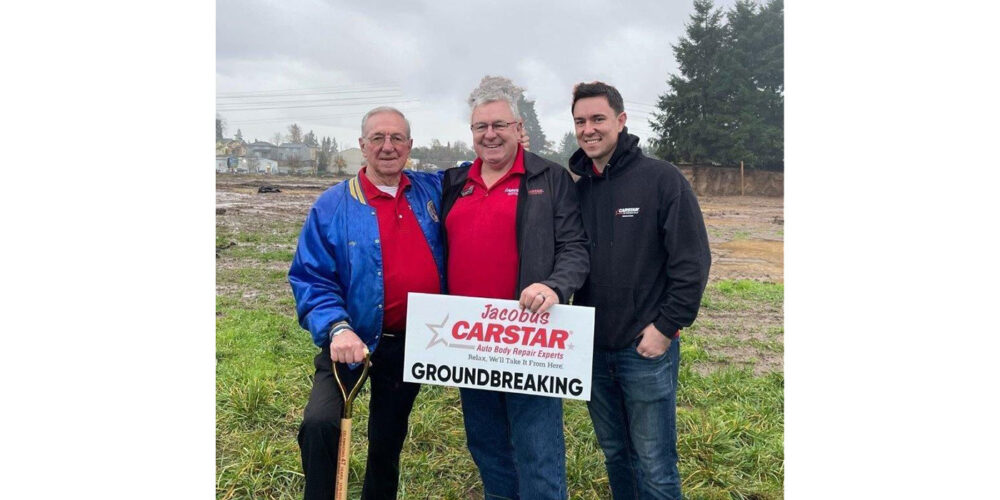Today’s world is certainly much different than it was 12 years ago. The introduction of direct repair programs (DRPs) and the difference in how you market your services has required change and frustrated many. Frustrated or not, you still need to learn what your options are using this “new way” of doing business and how to pursue those options – even if your state currently doesn’t have DRPs.
To Be or Not to Be
The first thing you need to do is make a decision:
- “Do I place my emphasis on obtaining and keeping only DRPs?”
- “Do I choose to not market to DRPs and take the ÔOwn the Vehicle Owner’ Customer Approach”?
- “Do I try to do both?”
Most shops I’ve become familiar with over the years have tried to do the last option, and they’re constantly analyzing their DRPs’ percentage to their business and worrying if they have too many eggs in one basket. They often end up leading a very paranoid business life, with all their energy being consumed by these concerns.
But these concerns aren’t totally unfounded. Let’s face it, if we don’t provide adequate service and value to the customer – whether he’s the vehicle owner or a work provider – we risk losing his business.
Another group of shop owners – who I’ve yet to understand – have a different view. They believe that they can wake up each morning and the work will automatically be there – or that they’re entitled to it for some reason. This idea is almost insane in nature, unless you want to move your business into a non-capitalist society. But here in the States – and in many other countries – everyone’s looking for a better mouse trap, so casualties are inevitable when someone does it cheaper, faster, better and/or easier.
As the owner, you may select any of the business models from above. Then you must make a commitment as the business owner to guide your organization in this direction and ingrain your decision into the entire organization. If you don’t, you’ll certainly have problems – problems that can lead to business failure.
It’s Hard to Be No. 1. It’s Even Harder to Stay There
No matter which business model you’ve selected, being the market leader, innovator and the best choice to any customer is by far the best position to be in. Being like all the rest doesn’t give you any competitive advantage (or what I call a “value proposition”).
How to get to this great position may be difficult, but keeping the edge on competition may be even more challenging. This is one of the key secrets held by many successful business owners. A lot of business owners have had short-term success with this, but when the game begins to change, many don’t see it changing – and soon lose their competitive position.
I’ve personally seen this in our industry many times over. Shops that were market leaders 15 years ago are now nowhere compared to their competition. Unfortunately, these shop owners often don’t realize it and believe the only way the “other guy” could have succeeded is by being dishonest or unethical. They quickly shift all blame off themselves and onto what the “other guy” must be doing wrong (as in illegal). It’s much easier to place the blame on someone else than to look inside for the answers.
What Makes You So Darn Special? Figure It Out
The first step is to truly assess your company’s Strengths, Weaknesses, Opportunities, Threats and Strategies. This is a modified version I use called a S.W.O.T.S. list – adding the new element of Strategies. I’ve found this addition to be necessary because without a strategy to deal with these elements, what good is the exercise? Nothing gets done to change things without a strategy.
Unfortunately, I’ve also found that many companies cannot do this themselves because of the following roadblocks:
- They’re too close to the problem. They can’t admit or see that they have weaknesses and threats.
- They can’t identify strengths and opportunities, which truly lead to a distinct value proposition.
- They’re unable to see a strategy to lessen the risk of failure for any of the elements.
- A company culture isn’t in place to work together to solve these problems.
- The owner’s unable to allow free thought to bring brain power of the entire company to bear on these challenges.
I often work with the management to do this analysis for them and to develop strategies to again become the market leader and to take advantage of the opportunities that are available.
To do this yourself, you have to analyze your operation and organization from a non-biased perspective. You should also bring in all management to provide their views, along with shop floor personnel.
Then all of you need to ask yourselves:
- What are the strengths of the business?
- What does the strength have to offer over everyone else in our market?
- Why should the customer (vehicle owner or work provider) choose us?
To do this correctly, you have to come up with more than equipment, training, length in business and other facility-related items. Anybody can do most of those. Look or develop strategies to create strengths that others don’t match up to – such as convenience factors like hours, cycle time, getting it right the first time or how customers do business with you.
I’ve seen shop owners make it so difficult to do business with them that anyone in the market that makes it easier would certainly prosper. You’ve got to make your organization customer focused and ensure the results are consistent.
Also make sure your definition of good customer service is not just the way you handle problems/comebacks. That certainly isn’t what customer service is supposed to be. We should get it right the first time – not just train people how to apologize for the inconvenience.
Tell Them About You
Once you identify your shop’s strengths and opportunities, you need strategies to accomplish them because you’re now ready to tell everyone about you – including work providers. But make sure you can back up what you say through action.
Every company needs a professional company rŽsumŽ to distribute to prospective customers, such as fleet accounts, DRPs and other wholesale accounts. This portfolio should include pictures and a listing of your services offered and your convenience advantages, as well as your value proposition. You also should include your abilities to perform, such as your training, equipment and certifications. I also recommend adding a 10- to 15-minute PowerPoint













